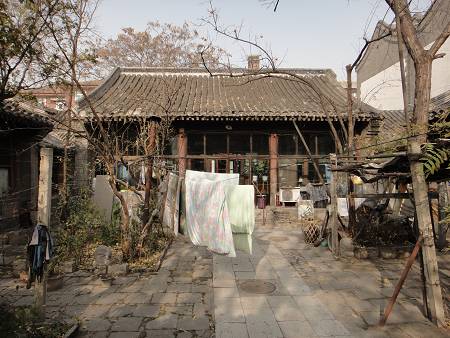The secret histories: Xitangzi Hutong's been largely rebuilt, but the past still catches up
|
|
|
John Roote digs for George Kates' roots. Photos: Yin Yeping |
You can't define a hutong by its appearance any more than you can judge people by their looks. While many today are in shabby condition, if they're still around at all, every brick and tile tells its own story. Among those scattered remains is where our story lies.
"The interesting thing about hutong tours is that you never know what you may get from it, and there are always surprises," said John Roote, an American tourist who came all the way from Texas to Beijing to spend two weeks collecting data for a biography he's writing about George Kates, an American sinophile who lived in and wrote about Beijing in the 1930s. It's not often that I have company on my hutong tours, but Roote came with me to visit Xitangzi Hutong, where Kates made his home during his Beijing years.
Located about a 10-minute walk from the Dengshikou subway station, Xitangzi Hutong links up with Wangfujing Dajie to the west and Dongsi Nandajie to the east. A modern shopping mall was erected on the hutong's west side, obscuring the hutong's outlet to the street.
Xitangzi is badly ruined. Its small, one-story restaurants and shabby stores are scattered between tall buildings, construction sites and half-demolished courtyards. The few courtyards remaining are concentrated to the hutong's west end, and Roote and I were surprised by what we were able to uncover among that disarray.
 0
0 









Go to Forum >>0 Comments